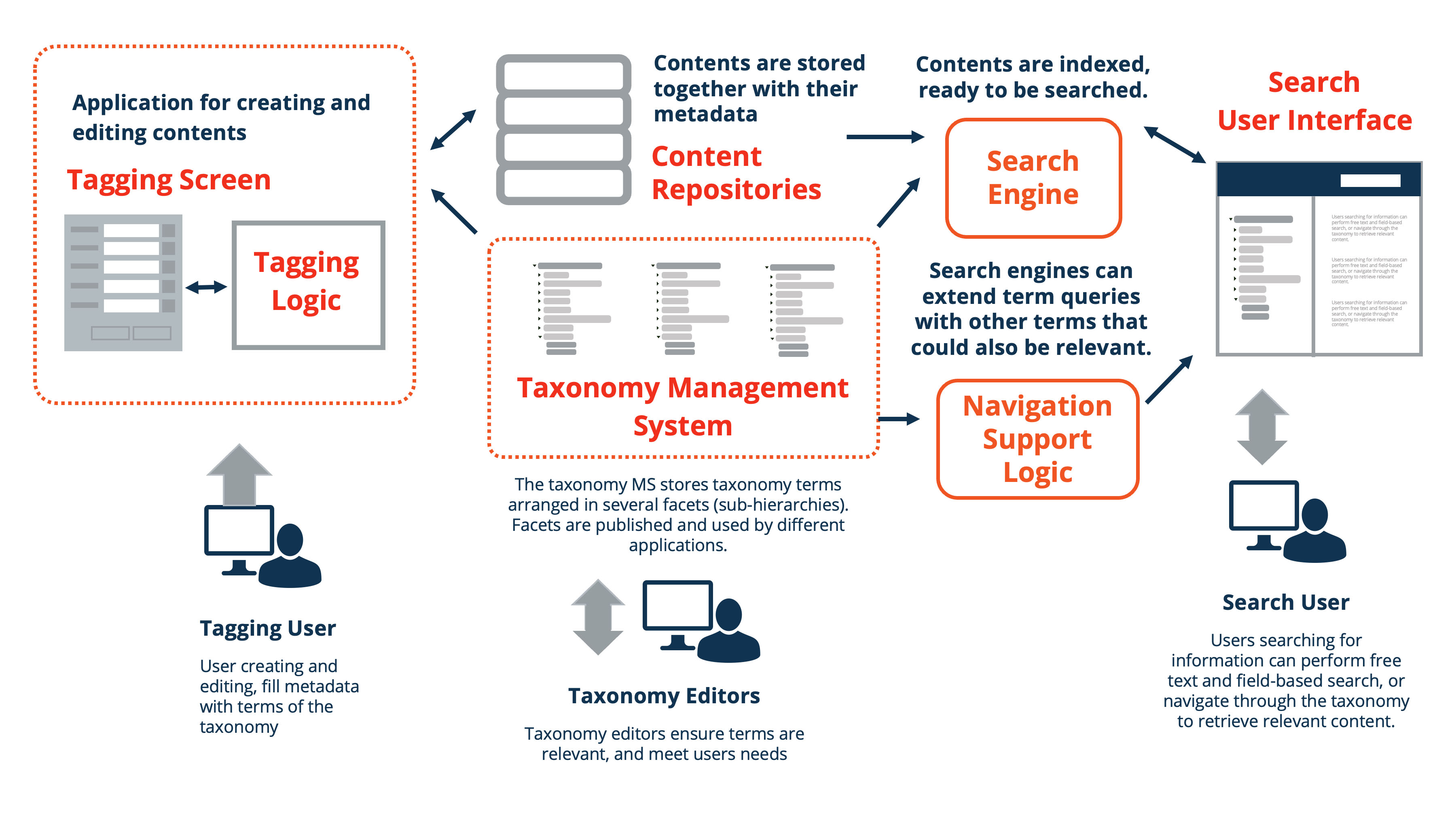If you are close to any librarian, information manager, or someone working with documents and their classification, you may have heard the term “taxonomy”.
A simple way to define “taxonomy” is like the hierarchical relationship of the main classes within any body of knowledge. That is, if you group all elements in any system by any dimension, and then establish hierarchical relations from more general to more specific, you have a taxonomy. Now, why any business would want to spend any effort in building one is something that needs to be justified (especially given the effort needed to define one). We believe there are two main reasons.
First of all, by building and adopting a taxonomy the organization develops a coherent and consistent terminology which will allow users from different teams, business areas or other organizations to discover relations between specific subject areas and retrieve information with precision and relevancy.
In addition, according to “A guide to developing taxonomies for effective data management A guide to developing taxonomies for effective data management”, “a business taxonomy has the potential for an even greater impact on the effective retrieval of content, or discoverability by users. Users are divided into 'browsers' who like to click through a structure to find what they are after, or 'searchers' who prefer search terms. Taxonomies serve both, providing users with multiple routes to the same information.”
That is, taxonomies, if used appropriately, are the mechanism to “put things in order” in knowledge intensive organizations, which is realized via any of the following:
- Accessing information via category navigation.
- This would be the typical “topic map” or “topic navigation” offered in many internal or external websites.
- Unifying the understanding of different concepts across the organization and serving as the first step to building a glossary of terms.
- As to minimize the risk that employees talk past to each other when there are terms employed ambiguously.
- Serving as the basis for more complex structures, such as ontologies, which include not only relations of hierarchy among terms, but of any type.
- Enhancement of the enterprise search engine with relevant results from related terms.
- For example, if the search term shares a “parent” with another term in the taxonomy, the search engine may provide results also from that “sibling”, improving the relevancy of the search.
- Adding improved filters or facets to search engine results.
- Like the options you see when filtering products by their characteristics in Amazon or Ebay.
- Defining the areas in which expertise is evaluated, in order to identify “who knows what” and to allocate the best fitting experts to the pertinent projects.

Those are very clear examples of its usefulness, however, building a corporate taxonomy requires a considerable effort by the organization, since many stakeholders have to provide inputs and agree on which terms to use and discard, let alone the alignment issues when conflicting terms appear. Moreover, frequently the utility of a taxonomy is not acknowledged, making any attempt to gain the buy-in of the right sponsors a difficult endeavor. Knowing beforehand how to deal with the hurdles and, more importantly, how to capitalize the advantages of a taxonomy is key to a successful completion of such endeavor.
Immedia has years of experience helping organizations like ESA (1) to building their taxonomies (1) and supporting them with the right technology. To know more, just give us a call or write an email at: info@immediait.com